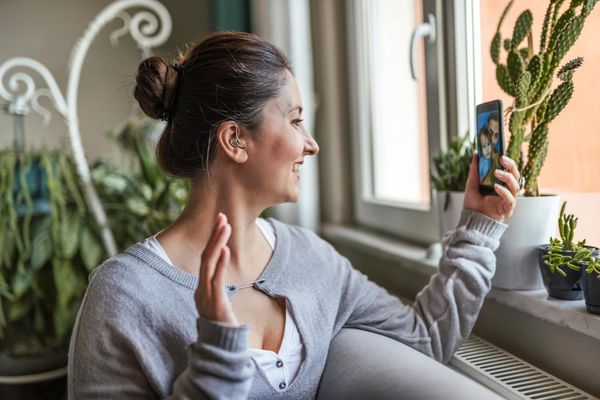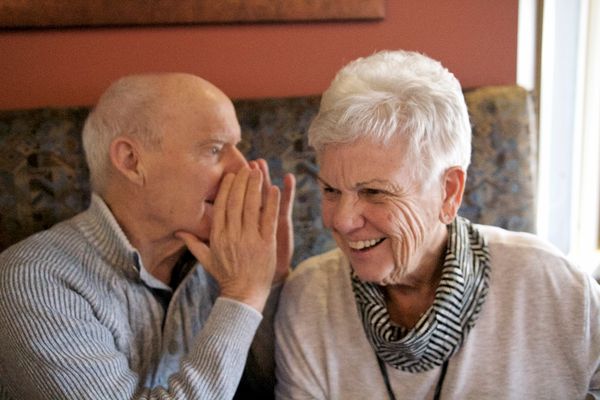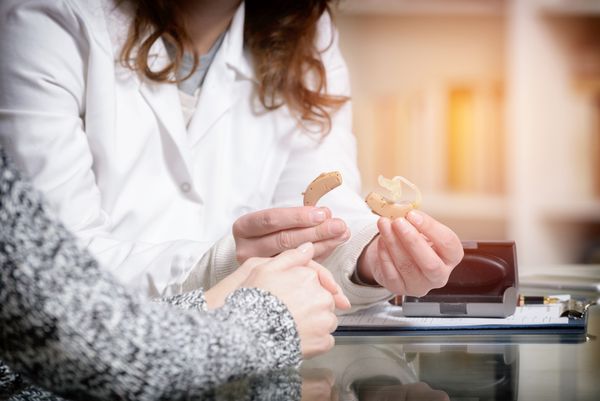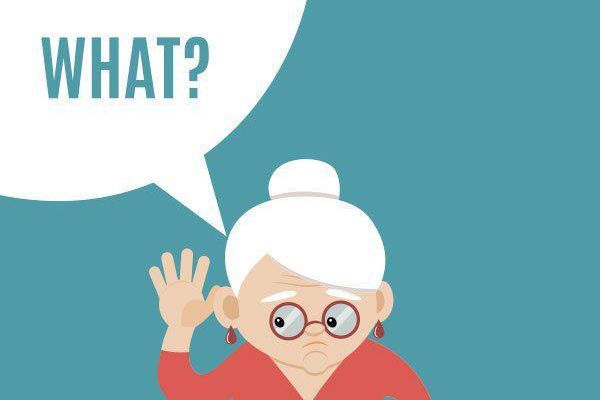By Lucas Berenbrok, University of Pittsburgh and Elaine Mormer, University of Pittsburgh
Over-the-counter hearing aids may soon be hitting the shelves of community pharmacies nationwide.
We are a pharmacist and audiologist who study the potential ways OTC hearing aids could be distributed and managed. In a market dominated by only a handful of manufacturers, hearing aids that are available without a prescription will be more accessible to the estimated 28.8 million U.S. adults who could benefit from their use.
A new class of hearing aids
A hearing aid is a device worn around the ear that makes desired sounds more audible for people with hearing loss. Hearing aid devices include a microphone, amplifier and a miniature loudspeaker to make sounds louder. Traditionally, these devices have been accessible only from licensed hearing aid dispensers or audiologists.
In 2017, the FDA Reauthorization Act designated a new class of hearing aids that will be available over the counter to increase the accessibility and the affordability of hearing aids for U.S. adults. These hearing aids will be able to be purchased without a medical evaluation by a physician or a fitting by an audiologist. However, OTC hearing aids are intended only for adults who believe they have mild to moderate hearing loss.
Implementation of these regulations is a year overdue, largely because of the COVID-19 pandemic. In July 2021, President Joe Biden directed the U.S. Department of Health and Human Services to issue proposed rules within 120 days for how OTC hearing aids can be marketed and sold.
How community pharmacies will sell these new devices is still unknown, but the law will undoubtedly increase public access to hearing aids. For one, pharmacies are more accessible to Americans than audiology practices. Audiologists tend to be located in metropolitan areas with higher incomes, younger populations and greater insurance coverage, with a smaller proportion of people who need hearing aids most – namely, older adults. In contrast, 90% of Americans live within 5 miles of one of the more than 60,000 community pharmacies nationwide.
This will also get hearing aids into patients' ears more quickly. It typically takes an average of four to five years after individuals recognize their hearing loss before they see a health care provider, and sometimes an additional six years to obtain a hearing aid device. With this new law, people will be able to purchase OTC hearing aids as soon as they become aware of their hearing difficulties.
OTC hearing aids will offer a do-it-yourself approach to addressing hearing loss. For example, a smartphone app may be used to guide users on how to self-measure and self-adjust the hearing aid to best fit their ear. Traditional hearing aids require a professionally administered hearing test and technical features that may allow more customized fine-tuning.
Increased access at lower costs
Only 3.7% of people reporting hearing difficulty own hearing aids. In addition to increasing accessibility, the 2017 federal law also intends to make hearing aids more affordable.
Traditional hearing aids cost an average more than $5,000 per pair, while OTC hearing aids will likely be less than $1,000. The charges and services associated with hearing aids, including the fitting process, which takes an average of 2.5 audiology visits, are not typically covered by Medicare, Medicaid or private insurers. At prices similar to monthly car loan payments, hearing health care services are often exclusive to people who have the means to pay high out-of-pocket expenses.
There are also racial disparities in hearing aid use. Although Black Americans are more likely to have had a recent hearing test, they are less likely to regularly use hearing aids than white older adults. Such disparities can have potential negative consequences for health and quality of life, including a higher risk of cognitive impairment, dementia and falling, as well as social isolation, loneliness and depression.
The pharmacist’s role in OTC hearing aid adoption
While OTC hearing aids won't require consultation with a medical professional, pharmacists are expected to play an important role in ensuring their safe and effective use.
As among the most accessible types of health care providers, community pharmacists are trained to identify, prevent and resolve medication problems. Pharmacists additionally have long helped patients purchase medical devices and equipment like glucometers for diabetes testing and blood pressure monitors for hypertension at their local pharmacy.
It is likely that community pharmacists will soon help patients select and purchase OTC hearing aids, and refer them to audiologists and physicians for additional screening, treatment and care when appropriate. They may also follow up with patients to ensure that the device works as expected. To prepare pharmacists for this new role, the University of Pittsburgh has developed the first online program to teach pharmacists and pharmacy technicians how to help patients safely choose OTC hearing aids.
By providing a lower-cost and more readily available option, OTC hearing aids have the potential to address significant barriers to hearing aid adoption and use.
[Like what you've read? Want more? Sign up for The Conversation's daily newsletter.]![]()
Lucas Berenbrok, Associate Professor of Pharmacy and Therapeutics, University of Pittsburgh and Elaine Mormer, Professor of Audiology, University of Pittsburgh
This article is republished from The Conversation under a Creative Commons license. Read the original article.







